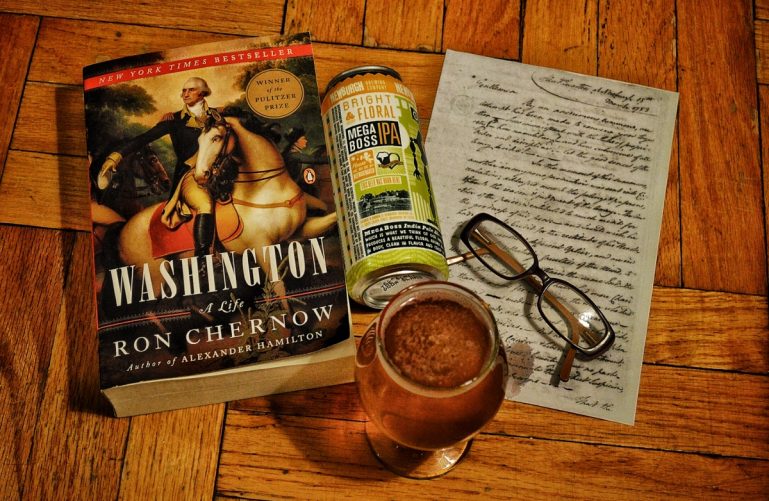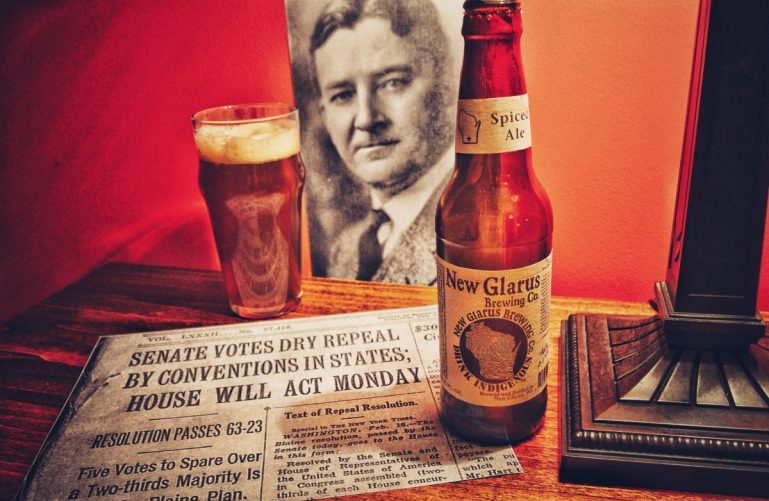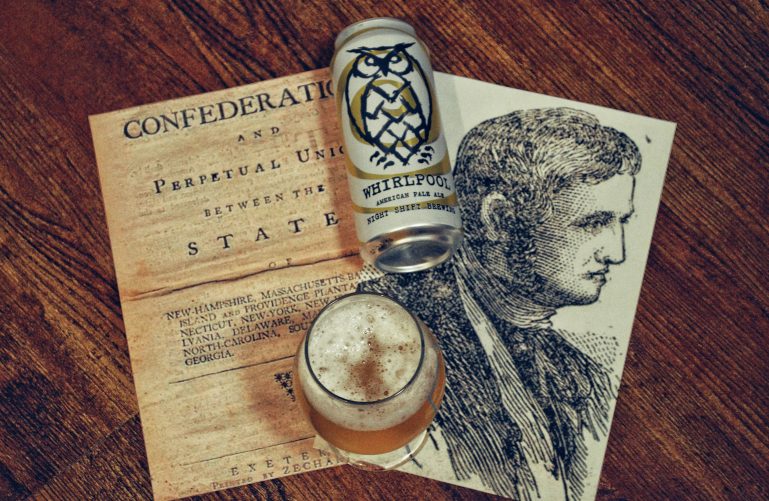Sergeant Elijah Churchill: Barrel Aged Beers and Purple Hearts

Not going to lie, I love it when breweries don’t just use a thesaurus to throw a beer name together. And naturally there’s an added bonus for lesser-known historical references. So, Newburgh Brewing’s ‘Sergeant Elijah Churchill’ is right up my alley. Let’s dive in!
Remembering History
Sergeant Elijah Churchill fought in the Continental Army throughout the American Revolution. You might be thinking “So did about 230,000 colonists! Why does he get a beer named after him?” Or, if you’re simply not a fan of history “Who cares?” While I definitely can’t make you care, Elijah’s story serves as a great example of the impact that “minor” figures have on the greater historical story.
First, let’s talk about the role of details when retelling history. People forget minor details as they get farther away from an event. Everyone remembers the guy that got hammered at college and rode a mattress down the stairs. But we probably don’t remember what we were wearing that night. I wore a t-shirt proclaiming myself to be “Sober” because I thought it would be an amusing thing for a guy riding a mattress down the stairs to wear, but that’s entirely besides the point.
The bigger the event and the greater the accomplishment, the more likely that people will remember it centuries later. This is how we learn history at school. Teachers focus on legendary names, earth shattering events and revolutionary ideas. While this is a great way to get your historical feet wet, it neglects the story of Joe Normal (I bet you thought I was going to say Exotic).
History doesn’t happen on the backs of one or two people. Everyone takes part in the human story. For example, George Washington was integral to the Patriot’s victory in the American Revolution. Without the support of hundreds of thousands of soldiers, however, he would have been captured, hung and quartered. Not quite the same success story.
Exploring the stories behind “average” folks fascinates me. They provide a better idea of what most people were experiencing, not just the titans of history. And frankly, I think they’re better role models. Trying to emulate George Washington? Daunting. Trying to emulate Elijah Churchill? I got this.
The Badge of Military Merit
Let’s dive into some actual history now. If you’re an American Revolution buff, or just have a passing interest, New York State is chock full of history. From the disastrous defeat at the Battle of Long Island to resounding success at Saratoga, historical markers dot New York’s Revolutionary landscape.
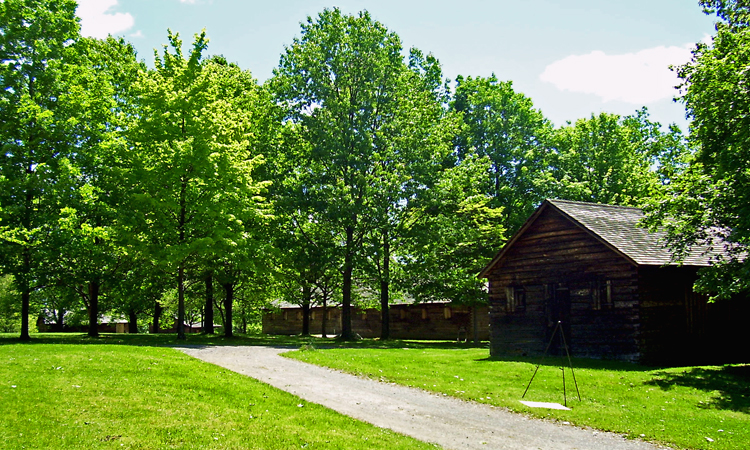
An oft forgotten hub of Patriot action lies up the Hudson River around the Newburgh area. Between June of 1782 and October of 1783, part of Washington’s army camped in New Windsor. Commander-in-Chief George Washington himself headquartered in Newburgh where he would pen the order that honored one Sergeant Elijah Churchill. Almost two and a half centuries later, a brewery located a stone’s throw from Washington’s headquarters would honor the same solider. Interest piqued? Good.
A Restless Army in Newburgh
The British lost the American Revolution at the Battle of Yorktown in 1781. However, hostilities between the two countries wouldn’t formally cease until the Treaty of Paris was signed two years later. British soldiers remained on American soil so the Continental Army needed to remain intact.
Despite their victory, morale wasn’t particularly high among the American soldiers. Years of neglect from the Continental Congress ranging from a lack of basic supplies to owed salaries created tension among the ranks. And, as we all know, there’s only enough fife and drum playing a sane human can manage.
Washington knew very well that his troops suffered beyond the battlefield throughout the war. He also knew that Congress had an unenviable burden on their shoulders. While some of his officers believed that the Army should force Congress to act (read all about The Newburgh Conspiracy in a previous article of mine), Washington believed too strongly in the republican motives behind the Revolution to stage a coup. The Patriots overthrowing a tyrannical government made perfect sense. Toppling an ineffective, but elected, governing body, seemed hypocritical.
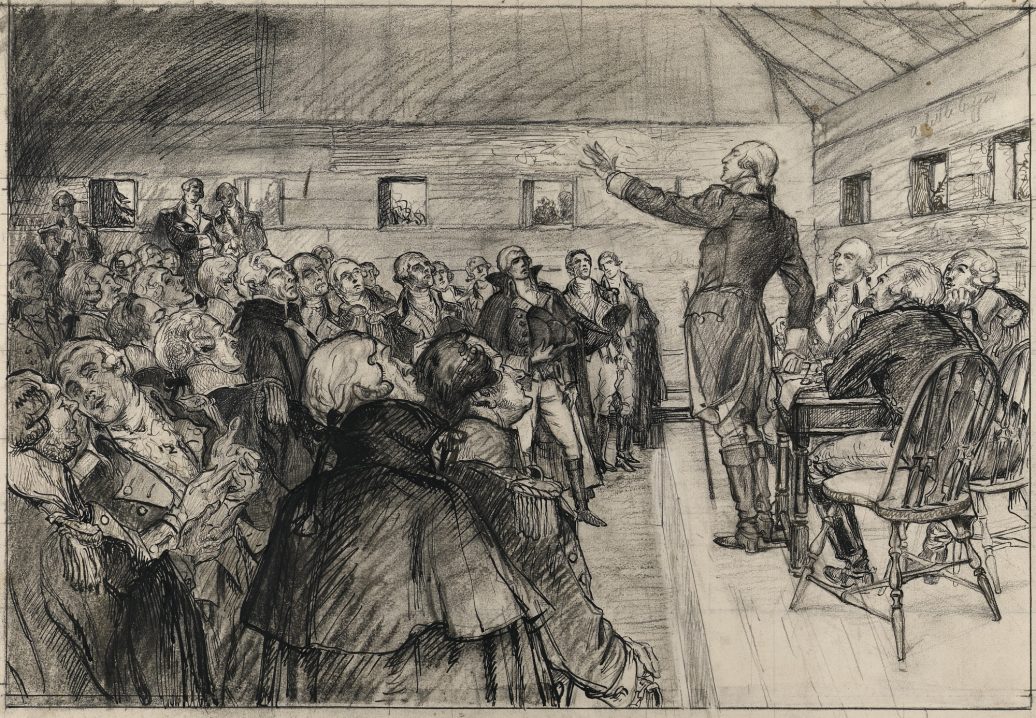
Washington needed to devise other ways to boost morale. Why not honor enlisted and non-commissioned officers? They were, after all, the backbone of his Continental Army.
Such an award may seem inconsequential today. However, most militaries of the time only recognized commissioned officers, generally soldiers with a rank of lieutenant or higher. Additionally, these officers received their rank due to their privileged backgrounds, not because of actual merit. While acknowledging the bravery of the common soldier wouldn’t heal wounds or put money in their pockets, it represented a shift in appreciation for the rank and file.
The Continental Army’s New Honor
And so, in Newburgh on August 7th, 1782, Washington wrote a General Order announcing the creation of a few different badges of distinction. One honor created was the Badge of Military Merit:
“The General ever desirous to cherish virtuous ambition in his soldiers, as well as to foster and encourage every species of Military merit, directs that whenever any singularly meritorious action is performed, the author of it shall be permitted to wear on his facings over the left breast, the figure of a heart in purple cloth, or silk, edged with narrow lace or binding.”
An interesting side note: People didn’t classically associate purple with bravery, so why did Washington choose it? I don’t know for sure, but I can certainly hazard a guess. Purple symbolized royalty and nobility. Even in the 18th Century, it remained one of the more expensive dyes for clothing. Chances are the average person did not own anything purple. Washington’s choice of this regal color perhaps signified his deep respect for his soldiers, particularly those from the lower ranks. A flash of red or blue would have been commonplace on uniforms. But purple? That would truly stand out and demonstrate a person’s status.
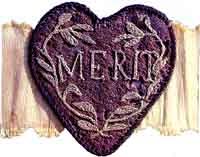
Fashion notes aside, the selection process for the new Badge of Merit required nomination by a commanding officer and approval by a board of Continental Army officers. Less than a month after Washington’s announcement, Major Benjamin Tallmadge (of the Culper Spy Ring fame) wrote personally to Washington and nominated Sergeant Elijah Churchill of the 2nd Continental Dragoons. While approval took a few months, Churchill received confirmation of his honor in May of 1783.
Churchill was presented with his Badge of Military Merit at a ceremony in Newburgh on May 3rd. The other recipients included Sergeant William Brown of the 5th Connecticut Continental Line Infantry and Sergeant Daniel Bissel of the 2nd Connecticut Continental Line Infantry. Beyond these three, there are no official records of anyone else receiving this honor. Where does the Purple Heart come into play? And what made Churchill so special? Read on!
Who was Elijah Churchill?
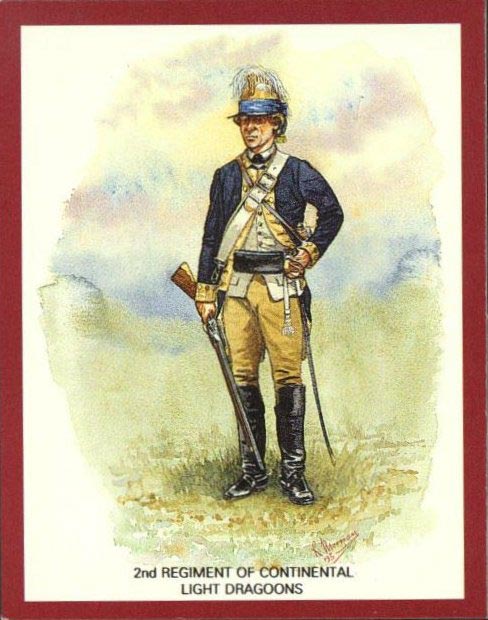
Despite receiving the honor of having a NY craft brewery name a beer after him, Elijah Churchill wasn’t a New Yorker. Born on September 4th, 1755 in Newington, Connecticut, Elijah was a carpenter by trade. Almost immediately after the initial skirmishes of the American Revolution at Lexington and Concord, he joined a number of his townsmen and marched to Boston to provide assistance.
By May of 1777, Elijah joined the 2nd Continental Light Dragoon Regiment (unfortunately, they rode horses, not dragons). He and his comrades, dubbed Sheldon’s Horse after commanding officer Colonel Elisha Sheldon, patrolled Connecticut, Westchester, Rockland and Northern NJ. They earned the nickname “Washington’s Eyes” for their extensive scouting missions throughout the Revolution.
Interestingly, Sheldon’s Horse never actually served as a whole unit. Elements would fight in the Battles of Saratoga, Brandywine, and Yorktown while others served as Washington’s personal bodyguards, guarded John Andre after his capture and even played an integral role in the Culper Spy Ring (as made famous by the recent AMC series “Turn”). Churchill didn’t take part in any of these events, however. His actions were a blip even during the Revolution itself.
The Raids Behind the Fame
Elijah’s gallant actions took place during two raids behind British lines on Long Island. Not exactly the epic engagements featured in equally epic movies, but just as important to the men who took part in them.
Battle of Fort St. George
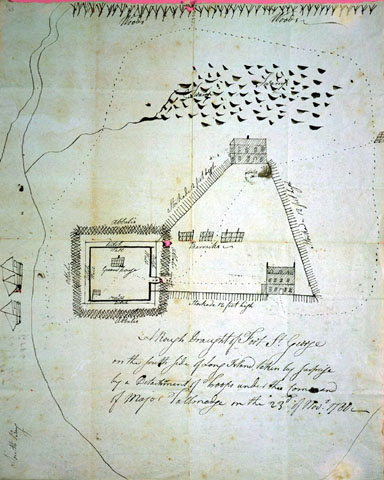
The first occurred on November 23, 1780 at Fort George, near present-day Shirley, NY in Suffolk County. Two days before, a force of 80 men under Major Benjamin Tallmadge crossed the Long Island Sound on whaleboats.
Approaching Fort George after a soggy march near the break of dawn, a British sentry spotted the Americans and fired a shot to sound the alarm. At that, the Americans rushed forward with Churchill leading the way. For his efforts, the British sentry received the pointy end of Churchill’s bayonet.
After a brief firefight with no American casualties, the fort was under Patriot control. Burning the fort, along with 300 tons of hay meant for winter forage for British horses as well as other supplies, the Dragoons returned to Connecticut with 54 British soldiers in tow.
Battle of Fort Slongo
Almost a year later, on October 2nd, 1781, Churchill participated in another raid on Long Island, at Fort Slongo, near modern-day Northport. Tallmadge organized the attack as retaliation against Benedict Arnold’s assaults on Connecticut. A diversionary move on the fort quickly turned into an all-out assault and the Patriots overwhelmed the defenders. The only American solider wounded in the raid was Churchill. With the destruction of more supplies, this time mostly ammunition, the Patriot returned to their base with another 21 British soldiers.
Why Churchill?
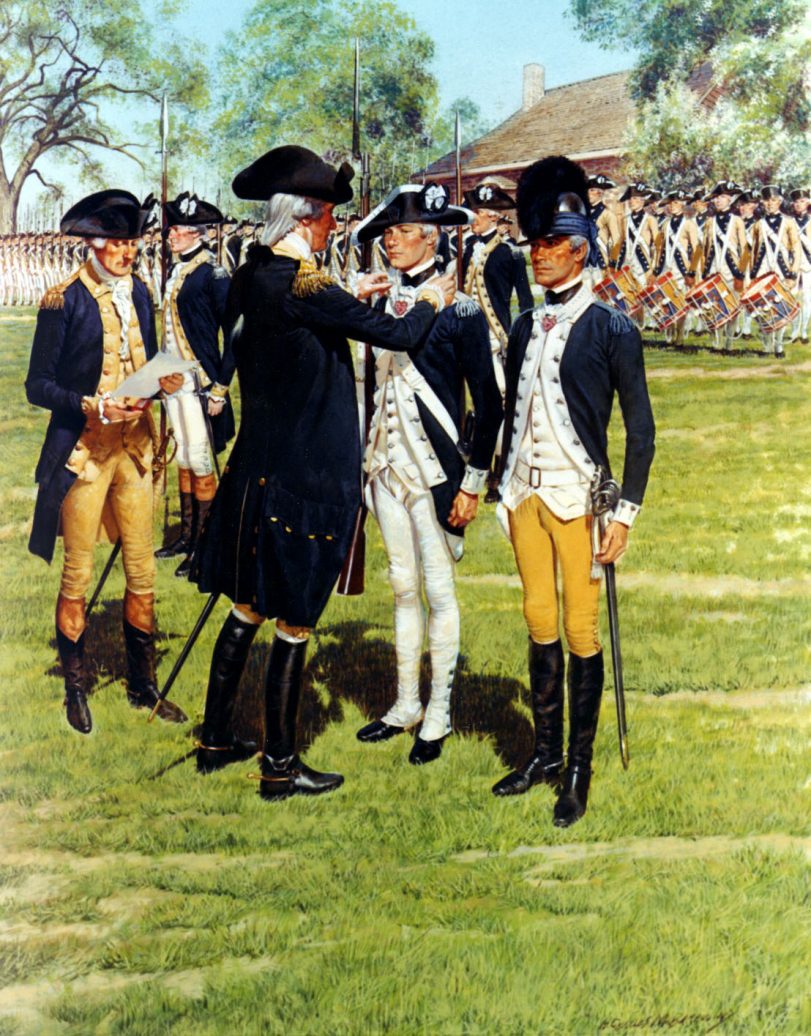
Compared to the other Badge of Merit recipients, Churchill’s exploits were relatively minor.
Sergeant William Brown belonged to a group of volunteers dubbed the “forlorn hope” at the Battle of Yorktown. These guys had the unenviable and deadly task of literally hacking away at the British forward fortifications during the Battle of Yorktown (the subsequent capture of which would pave the way for Cornwallis’ surrender).
Sergeant Daniel Bissel, on the other hand, served as an American spy in British controlled New York City. Thanks to time spent posing as a deserting Continental soldier, Bissel provided Washington with detailed information about British troop deployments and forts on Manhattan and Staten Island.
So why is Churchill part of this group?
Once again, this honor wasn’t simply about awarding larger than life characters performing larger than life feats. Washington created it to honor soldiers demonstrating bravery regardless of their task.
Additionally, raids also served a very important strategic objective. It’s important to remember that New York City, which remained in British hands after they trounced Washington’s forces back in 1776, served as the base for British operations in the colonies. As such it remained a major military objective throughout the War. And while raids weren’t as flashy as major battles, they helped keep British forces off-balance, a crucial component of the Continental Army’s strategy.
The British had no idea of knowing if Churchill’s raids were random operations or part of a larger strategy to recapture the city. This uncertainty forced the British to keep troops in New York, instead of transporting them to areas of greater need. Additionally, the capture of British soldiers and supplies meant that additional troops had to be dispatched to remote areas on Long Island for protection.
The threat of a large-scale attack on New York muddled British strategy which played a key role in British General Charles Cornwallis’ entrapment at Yorktown. Without the Yorktown victory, the War would have continued until the British got tired of paying for it or the Patriots were forced to negotiate. Either way, the peace treaty would have looked differently, and not for the better. Did Elijah Churchill win us the Revolution? Well, no, but his actions played a part. Just think of all the other folks who played an equally small but integral part in the victory. Kinda mindblowing isn’t it?
After the Revolution

So what happened to Elijah Churchill? Like any number of other soldiers, he returned home to his family and quietly lived out his days. Elijah lived to the ripe age of 85 and passed on April 11th, 1841 in Middlefield, CT. If you’re so inclined, his tombstone can be found in Bell Cemetery in Middlefield.
And the Badge of Military Merit? The Continental Army disbanded in the months following Elijah’s receipt of the Badge. While no one discontinued the award, it faded into obscurity. A century and a half later, in 1932, General Douglas McArthur revived the Badge to commemorate the bicentennial of Washington’s birth. The award was renamed the Purple Heart and Washington’s figure graced the new medal.
By World War II the Purple Heart would be associated with soldiers who were injured or died in combat. It’s currently estimated that 1.8 million medals have been awarded since the 30s. There’s no complete record of everyone who’s received a Purple Heart, but now we know who got the first one.
How’s that for a historical deep dive?
Historical Beer Pairing: ‘Sergeant Elijah Churchill’ from Newburgh Brewing
I’ve featured Newburgh Brewing in the past and over the years I’ve continued to enjoy them. Their Cream Ale and Brown Ale perfectly represent two underappreciated, but delicious styles. While I’m admittedly not the biggest fan of barrel-aged beers, I couldn’t pass up a version of their Brown Ale aged in Hillrock Estate Bourbon Barrels. The name was icing on the cake.
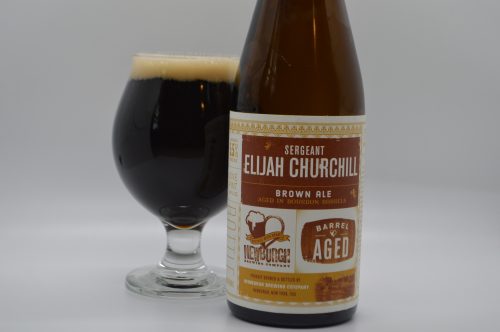
Churchill pours a deep brown with a surprising amount of effervescence. Even with a crown cap, I’d expect three year old beers to lose some of their fizz. Not this one. Small, tightly packed tan bubbles hung around, making it a picture perfect pour.
Bourbon aromas flew to the forefront. There was absolutely no mistaking this for your average brown ale. Undertones of caramel, brown sugar, vanilla and milk chocolate floated by, offering hints of the base beer.
Those bourbon notes followed through in the first sips. It wasn’t a boozy bourbon though. Almost like a condensed essence of bourbon without any of the burn. Touches of milk chocolate, vanilla, dark fruits and berries peeked through the first flavor onrush. However, virtually none of the roasted characteristics I’d normally get from their Brown Ale.
Finishing on the drier side with just a touch of oak, Churchill drinks like a much bigger beer than it actually is. It comes in at 5.5%, but has the characteristics of a beer twice its ABV. The lower alcohol probably accounts for the dominance of the Hillrock Estate bourbon barrels, but frankly that’s not a bad thing. Any time I can enjoy a barrel-aged beer and not feel tipsy when I stand is a victory in my book.
If you’re interested in giving ‘Sergeant Elijah Churchill’ a try, Newburgh Brewing is currently offering it for delivery! Let me know what you think!
Thirsty for More?
If you’re interested in re-examinations of our historical memories, check out Holger Hoock’s “Scars of Independence: America’s Violent Birth.” Over the years, Americans crafted an idealistic history of the Revolution that looked past the indiscretions of the Patriots. However, the war was a brutal conflict and violence wasn’t isolated to the battlefield. From battlefield atrocities and the treatment of prisoners of war to British abuse of non-combatants and Patriot persecution of Loyalists, Hoock covers a ton of forgotten nastiness. It’s an absolutely fascinating read if you’re looking for a history with a different spin.
